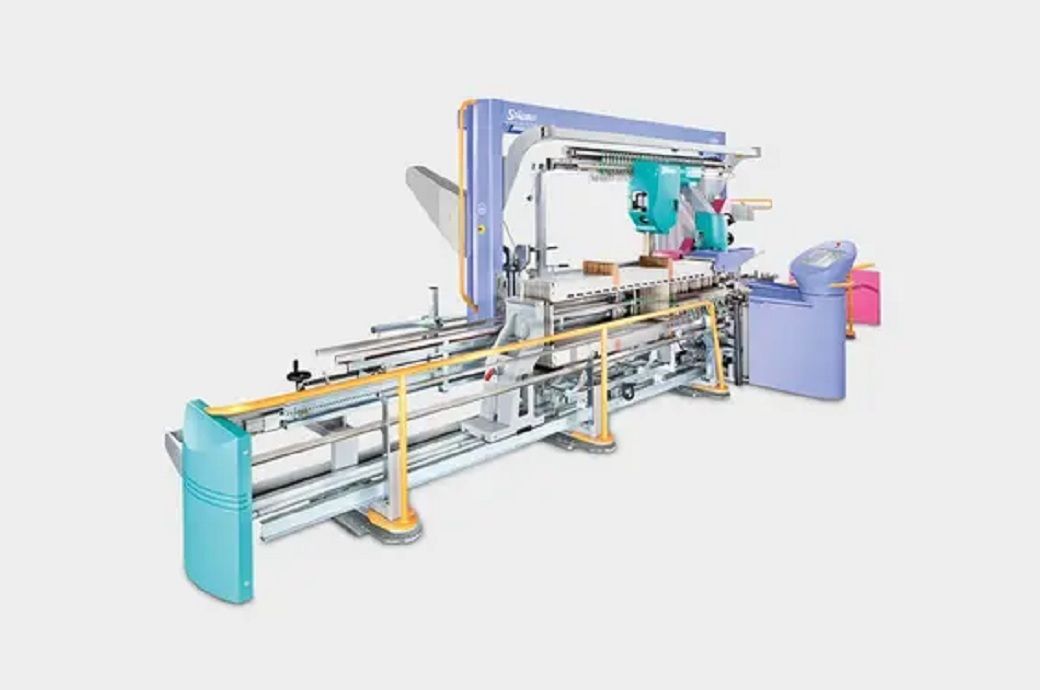
Key to the SAFIR PRO S67's performance are its novel and enhanced features, which provide substantial user benefits. The machine employs high-tech features for quick recognition of yarn colours, characteristics, and repeat patterns through AWC 2.0 (Active Warp Control 2.0). This system utilises the latest in optics, sensors, and algorithms to streamline the weaving process.
Additionally, the SAFIR PRO S67 can be equipped with ICS (Initial Condition Setting), which facilitates fast start-up proceedings by using pre-defined machine parameters. This feature significantly speeds up the drawing-in process, achieving rates of up to 200 ends per minute, thereby guaranteeing a very high production rate.
The machine's remote control capabilities allow it to be linked to a secure data cloud, offering APC (Active Productivity & Drawing-in Control), the company said.
Monitoring and regulating various parameters
The SAFIR automatic drawing-in machines allow for perfect monitoring of various status information during the drawing-in process. The machine pre-settings can be easily adapted to different yarn types, with available kits for specific needs such as wool or fancy yarns. These hard and software adaptations enable a quick start-up of the drawing-in process.
Fabric quality cannot be monitored during the weaving process itself; instead, it is controlled beforehand through the automatic production of perfect warp beams on the SAFIR PRO S67. Stäubli's Active Warp Control 2.0 technology ensures the quality of the final product after drawing-in: the complete weaving harness. The higher the quality of the weaving harness, the better the downstream weaving process, resulting in more first-quality fabric. This is achieved by eliminating misaligned yarns that can lead to weaving machine stops and secondary quality woven fabric.
Staubli’s Active Warp Control technology
The handling, control, and monitoring of each individual warp yarn throughout the entire drawing-in process is decisive for the quality and perfection of the finished harness with warp beam. That’s why Staubli developed “Active Warp Control 2.0” (AWC 2.0), which is optionally available on all SAFIR systems. AWC 2.0 controls and monitors the drawing-in process on the basis of the continuously measured yarn properties and the programmed draw-in repeat.
Yarn properties
Optical, non-contact recognition and measurement of yarn properties is the essential function of AWC 2.0. Interpreting the measured data through image processing by high-performance processors allows the determination of titre, colour, twist direction and, within certain limits, even hairiness, transparency, and monofilament or multifilament characteristics. Measurements are done when the individual yarn is separated from the warp sheet and ready to be drawn in. Based on the measured data, AWC 2.0 controls the subsequent steps of the drawing-in process.
Yarn titre and double-end detection
Based on the measured yarn titres, AWC 2.0 detects whether a double end has been separated by mistake. This is a standard function in all SAFIR configurations. If a double end is indicated, the machine stops and the operator inspects it and takes a decision based on 2 images taken from different angles. Double-end detection can even be used when warps with yarns of various titres are to be drawn in. In this case, AWC 2.0 uses the programmed draw-in repeat to check whether yarns with the correct titre are present in the correct position for drawing in.
Layer & Offset Management
When preparing double warp beams or two-layer beams, e.g. for fancy denim or filament applications, warp beam widths vary, yarn types may be different and repeats may show 1:2 instead 1:1. These circumstances require specific solutions for maintaining the efficient processing of the warp sheet preparation.
For optimising the processing Staubli offers a dedicated clamping system for the stationary drawing-in stations for the SAFIR S32-3.6 and the SAFIR S40 automatic drawing-in machines, namely the Layer & Offset-Management.
Initial Condition Settings (ICS) for efficient drawing-in start-ups
Yarn properties, including yarn twist, yarn count, type of filament (normal, high bulk, etc.), and stiffness directly influence the drawing-in performance of any automatic drawing-in system. ICS consists of hard- and software elements, depending on the option chosen, and allows to set up pre-settings for drawing in yarns with special properties.
ICS is focusing on applications
While AWC controls every individual yarn, ICS optimises the overall drawing-in process in accordance with the requirements of the specific application. Stäubli ICS allows weavers to easily expand their range of applications and draw in glass yarns as well as technical and fancy yarns.
SAFIR PRO S67: Innovating the weaving industry
Labour is scarce in the textile and weaving industry. The function ability, the extreme ease of use, the availability of software options to control colours, yarn characteristics, yarn twists etc and pre-setting opportunities of applications innovate the use of the SAFIR PRO S67 technology. Digitalisation solutions (e.g. APC – Active Productivity & Drawing-in control via safe and secure Stäubli cloud) further facilitate the use, remote control and output of the machine. Innovation will also come through economic benefits using this technology. It basically reduces many of the current pain points in warp preparation or weaving.
“We are looking forward to our new investment in Staubli SAFIR PRO S67 which will set a foundation for a smooth and efficient weaving process, leading to high-quality fabric production and quick adaptation to market needs,” a representative from Lutuf Mensucat A.S. said during the SAFIR PRO S67 launch event in Istanbul.
Fibre2Fashion News Desk (KD)